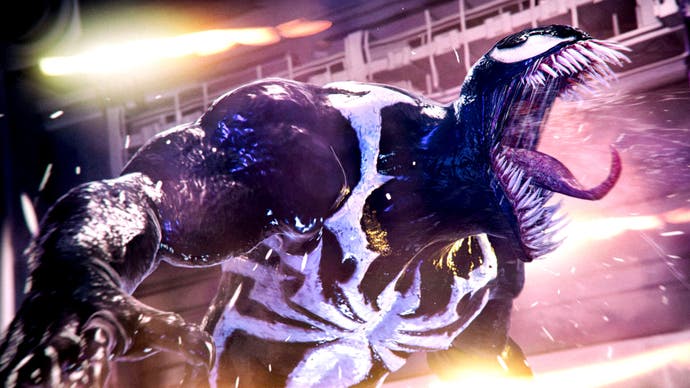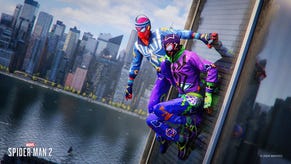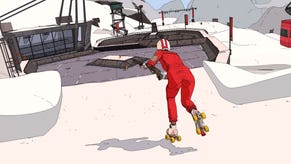Marvel's Spider-Man 2: what does the debug menu actually do?
It's patched out now, but the functionality was immense - and fascinating.
It only lasted for a little while, but Insomniac Games gifted us a fascinating insight into the inner workings of Marvel's Spider-Man 2. The studio inadvertently released developer tools in version 1.002 of Spider-Man 2, enabling debug options and level selections that offered us a peek under the hood of one of the most technically advanced open worlds in any video game. A hotfix patch was quickly deployed that blocked off access to the menu, but we managed to take a good look at the tools. We wanted to see what kind of goodies it contained, what kind of performance metrics Insomniac uses internally and what kind of early and cancelled content was available. We got all of this - and more.
Let's start out by examining Spider-Man 2's performance metrics tools, which take the form of a frame-time graph with processor load and real-time resolution information, and also a frame-time histogram. By using these tools, users can access information about how the game is being rendered in real-time, without needing to guess or approximate based on the onscreen results, or indeed require the use of our own performance analysis tools. The most interesting readout here is the resolution figures. Spider-Man 2 uses a dynamic resolution system, with Insomniac's temporal injection technique upscaling the game to its target output pixel cont. That's nothing new, but some of the figures here are a little curious.
The fidelity mode at 60Hz output, for instance, seems to have a resolution range of 1296p to 2016p during gameplay, with the game shifting between a handful of resolutions contingent on load. That lower bounds is relatively rare, and the game usually sits at or around 1872p in my testing. Even when you aim the camera right at the sky though (with practically no geometry - a good trick for minimising GPU load), a full 4K is out of reach. Interestingly, these resolutions are lower than the resolution ranges we reported at launch, so it's possible there have been some post-release tweaks in subsequent patches - and all of the modes have actually seen some resolution tweaks.
At 120Hz output, the fidelity mode shifts to target 40fps, and there is an attendant drop to resolution. The top-end seems about the same, clocking in at 2016p in very light content, but under load, resolution drops as low as 1152p. In side-by-sides, the fidelity 120Hz mode usually clocks in at a substantially lower pixel count - like in a typical city scene, where the 120Hz variant is at only 59 percent of the resolution of its 30fps counterpart. In more extreme cases, there is a more meaningful resolution hit as the 120Hz fidelity mode comes in just above 1080p. It's a good reminder that despite the utility of 40fps modes on the consoles, they do require some resolution compromise, even if the uptick in fluidity is worth it.
The performance mode understandably brings up the back of the pack with a 936p to 1440p internal resolution, reconstructed to 1440p. In typical play, resolution hovers around 1152p and 1296p, which produces a respectable looking final image. Interestingly, this mode now has ray traced reflections on all transparent surfaces, which wasn't the case at launch. The addition of RT reflections on these car windows makes the world feel more consistent, though I imagine it carries a resolution penalty. For Insomniac's purposes, 1080p is defined as the default resolution here, with higher and lower resolutions marked in green and orange respectively. The same is true for the fidelity modes, though their default resolution is considered to be 1584p.
With all three modes side-by-side, the typical resolution deltas between each mode are laid bare. Cutscenes tend to fare best with all three options, with the deepest lows coming during this alpha-heavy action sequence in the opening - which we previously identified as one of the game's major stress points.
For an ambitious open-world game with ray tracing, the CPU seems well behaved too. In the performance mode there are sometimes CPU-driven dropped frames, but in the other modes CPU load isn't a problem. When frame-rate issues do crop up, it seems like streaming is an issue, as these tend to be more common when traversing at high speeds.
Insomniac's frame-time graph is fascinating, and is a great example of the kinds of tools developers use to keep track of performance while playtesting. It's very similar to the kinds of graphs we like to display in PC videos, and the real-time resolution information gives us a level of insight into how the game is functioning moment-to-moment that we really don't get a chance to see in other games. I wish every game had this kind of functionality exposed - though of course the utility to the end user is limited.
As a sanity check, I did pixel count a few shots and double-checked some of the reported dropped frames, and came back with results that matched Insomniac's readout. This appears to be the genuine article - a real, working performance graph that accurately logs the current state of the game. Spider-Man 2 does come with a lot of other performance-logging options, as well as toggles for basic functionality like texture streaming. Unfortunately, these don't seem to work. Presumably, these functions do work in the full debug build of the game, but don't in the production build with the debug overlay that we have access to.
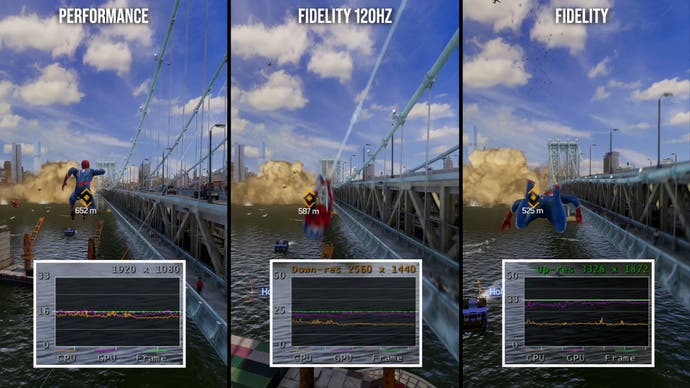
However, there is access to a lot of extra content that isn't available in the full game - including scrapped levels and areas that aren't supposed to be accessible to the player. For instance, there's an entire mission in Act 2 that seems to have been scrapped, codenamed "Meteor", which exists in very basic form. As far as I can tell, this sequence was replaced by a cutscene in the final game which covers the same material. There's no skybox, limited environmental art, and basic lighting, which suggests this content was cut very early and didn't make it to late stages of development. Players can swing along here, but there are no enemies to fight or anything like that, and water isn't implemented.
If we spawn into certain test levels, it's easy to get underneath the world and go for a little swim. Jumping off the edge of the world, it's possible to start swinging underneath the game environment, and if you look off in the distance you might be able to see a curiously placed cluster of blocks. Get closer and you'll see that these are actually the rooms that are actually ray traced against to generate Spider-Man 2's window interiors. There are 32 individually labelled pairs of windows and rooms here that are mixed and matched to generate these room environments. It's pretty cool to see these spaces, which are used to generate one of the game's more novel visual effects. We knew of these rooms' existence thanks to our interview with Insomniac last year, but it's great to see them too.
There are lots of other interesting little closed-off areas that are accessible. Certain checkpoints allow you to spawn inside of buildings, for instance. Players can enter a lot of broken versions of the open world by spawning in the city during a mission set inside of an interior. There are a couple of test levels set on a flat grey plane with the skybox in the background too, and some cutscenes we can view with a lot of missing assets. Users can also use characters unaccessible in more normal environments, like controlling a plainclothes Peter Parker in the open world, which is impossible in the regular game.
Past this point, I do have to provide a spoiler warning because the rest of the material I have to show you does touch on content from later in the game, so there will be spoilers going forward. I'm not going to discuss specific plot details, but there will be references to content and events you may not wish to know about.
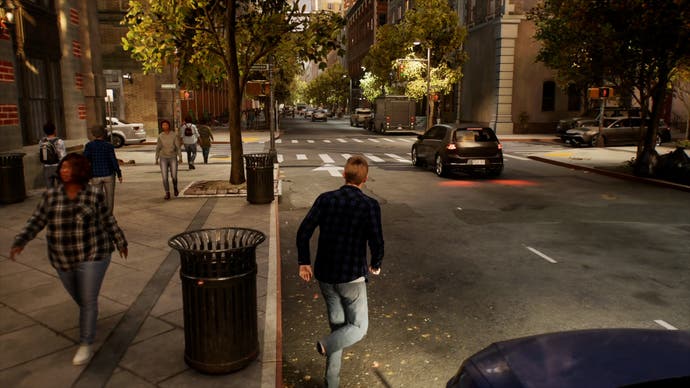
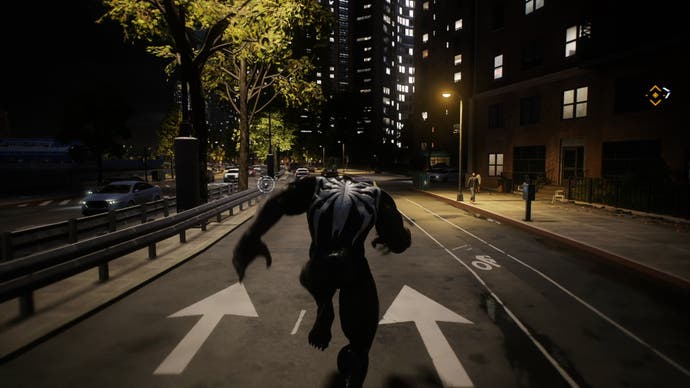
Perhaps most excitingly, it's possible to play as Venom in a bunch of different locations, including the open world. In the main game this villain is only controllable in short sequences in scripted sections, but by loading into the Venom mission during the Boiler Room objective and modifying the checkpoint, users can play as Venom pretty much anywhere in the game. That includes the Mysterio segments, the high school gym, and the Emily-May Foundation. Venom can even go for a dip in the ocean, or perch awkwardly on top of a lamppost. Some of these environments have only very basic lighting and no skybox, while others are just as they are in the regular game, it just depends on the checkpoint.
His move set remains the same though, consisting of jump and dash moves, a basic attack, and a couple of special abilities. His locomotion over the cars also leaves something to be desired. This move set will probably be expanded if we see a Venom-focused title in the future, but he's not really set up to traverse the Spider-Man-oriented buildings of NYC as it stands.
Players can also go into a test version of the Venom-ified world seen in the late game. This seems to be a goo-filled iteration of NYC that's been built for testing, though the streaming system isn't working properly and the sky is set to an intriguing red glow. Loading the test version of this map using the debug controls, there's a more complete version of this map with working lighting and streaming.
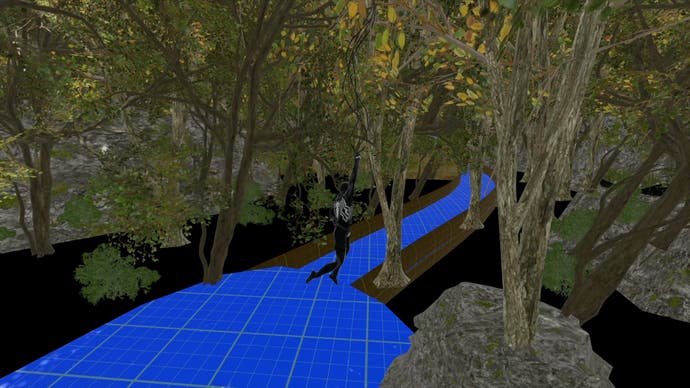
In the save menu launcher, this map is called "Gootiful Corner" which actually seems like a reference to "Beautiful Corner", which is available as a checkpoint in the debug menu. This is actually the opening shot of the very first Spider-Man 2 trailer that we saw back in 2021, though bereft of the effects that made that location look so compelling at the time.
The sequence-breaking ability can be exploited to spawn into any checkpoint during any mission to beat the game with ease. Players can simply load into the final sequence, specify "mission complete" as the objective, and a few minutes later we're at the credits scene with a trophy for game completion. There's also a checkpoint with near-infinite resources and a fully leveled-up character, giving us the ability to use every suit and ability in the game.
Looking to the future, the debug menu contains references to i34, specifically an announcement trailer, which is likely to be another Spider-Man sequel. And there's a long section of levels for a section about "Beetle", which could be DLC for the game. None of the i34 or Beetle levels actually seem to work in this build, however.
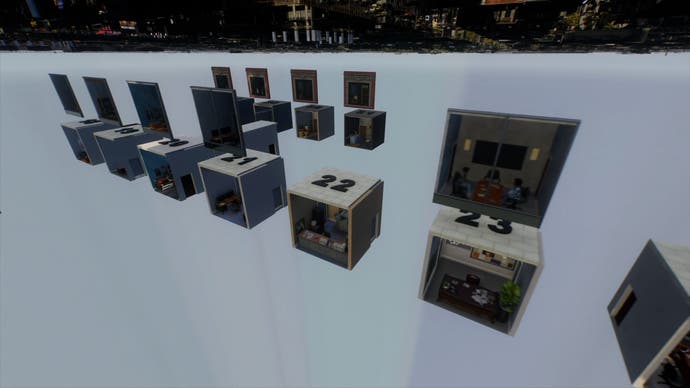
There's some other interesting material as well, like how the entire PlayStation experience demo is accessible here in individual parts, or how it's possible to spawn in the open world outside of boss encounters, or how players can swap times of day with the press of a button, but I think that's a good overview of most of the content I was able to see using the debug functions in the fleeting brief access players had to patch 1.002.
Access to the debug menu offered up a great, if unintended, glimpse into the workings of Marvel's Spider-Man 2, with the resolution readout and out-of-bounds rooms providing some insight into how the game functions. Some of the various tricks players can pull off are pretty cool too, although it's not like there's a vast treasure trove of unused content here - all the stuff that was worth keeping seems to have made it into the retail game.
Even so, this will go down in history as one of those legendary pieces of downloadable content we can't access any more - like Konami's PT demo, for instance - and if you did miss it, hopefully this piece will give you a good idea of what you missed out on.
